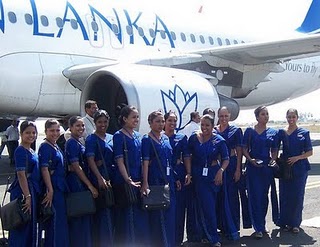Training, Other Qualifications, and Advancement
All pilots who are paid to transport passengers or cargo must have a commercial pilot’s license with an instrument rating issued by the FAA. Helicopter pilots also must hold a commercial pilot’s license with a helicopter rating.
Education and training. Although some small airlines hire high school graduates, most airlines require at least 2 years of college and prefer to hire college graduates. In fact, most entrants to this occupation have a college degree. Because the number of college-educated applicants continues to increase, many employers are making a college degree an educational requirement. For example, test pilots often are required to have an engineering degree.
Pilots also need flight experience to qualify for a license. Completing classes at a flight school approved by the FAA can reduce the amount of flight experience required for a pilot’s license. In 2006, the FAA certified about 600 civilian flying schools, including some colleges and universities that offer degree credit for pilot training. Initial training for airline pilots typically includes a week of company indoctrination; 3 to 6 weeks of ground school and simulator training; and 25 hours of initial operating experience, including a check-ride with an FAA aviation safety inspector. Once trained, pilots are required to attend recurrent training and simulator checks once or twice a year throughout their career.
Licensure. To qualify for FAA licensure, applicants must be at least 18 years old and have at least 250 hours of flight experience.
The U.S. Armed Forces have always been an important source of experienced pilots because of the extensive flying time and experience on jet aircraft and helicopters. Those without Armed Forces training may become pilots by attending flight schools or by taking lessons from FAA-certified flight instructors. Applicants also must pass a strict physical examination to make sure that they are in good health and have 20/20 vision with or without glasses, good hearing, and no physical handicaps that could impair their performance. They must pass a written test that includes questions on the principles of safe flight, navigation techniques, and FAA regulations, and must demonstrate their flying ability to FAA or designated examiners.
To fly during periods of low visibility, pilots must be rated by the FAA to fly by instruments. Pilots may qualify for this rating by having the required hours of flight experience, including 40 hours of experience in flying by instruments; they also must pass a written examination on procedures and FAA regulations covering instrument flying and demonstrate to an examiner their ability to fly by instruments. Requirements for the instrument rating vary depending on the certification level of flight school.
Airline pilots must fulfill additional requirements. Captains must have an airline transport pilot’s license. Applicants for this license must be at least 23 years old and have a minimum of 1,500 hours of flying experience, including night and instrument flying, and must pass FAA written and flight examinations. Usually, they also have one or more advanced ratings depending on the requirements of their particular job. Because pilots must be able to make quick decisions and accurate judgments under pressure, many airline companies reject applicants who do not pass required psychological and aptitude tests. All licenses are valid so long as a pilot can pass the periodic physical and eye examinations and tests of flying skills required by the FAA and company regulations.
Other qualifications. Depending on the type of aircraft, new airline pilots start as first officers or flight engineers. Although some airlines favor applicants who already have a flight engineer’s license, they may provide flight engineer training for those who have only the commercial license. Many pilots begin with smaller regional or commuter airlines, where they obtain experience flying passengers on scheduled flights into busy airports in all weather conditions. These jobs often lead to higher paying jobs with bigger, national or major airlines.
Companies other than airlines usually require less flying experience. However, a commercial pilot’s license is a minimum requirement, and employers prefer applicants who have experience in the type of craft they will be flying. New employees usually start as first officers, or fly less sophisticated equipment.
Advancement. Advancement for pilots usually is limited to other flying jobs. Many pilots start as flight instructors, building up their flying hours while they earn money teaching. As they become more experienced, these pilots occasionally fly charter planes or perhaps get jobs with small air transportation firms, such as air-taxi companies. Some advance to flying corporate planes. A small number get flight engineer jobs with the airlines.
In the airlines, advancement usually depends on seniority provisions of union contracts. After 1 to 5 years, flight engineers advance according to seniority to first officer and, after 5 to 15 years, to captain. Seniority also determines which pilots get the more desirable routes. In a nonairline job, a first officer may advance to captain and, in large companies, to chief pilot or director of aviation in charge of aircraft scheduling, maintenance, and flight procedures.




















































